As temperatures soar, many plants turn to survival mode. Annuals and perennials that may have bloomed with abandon in May or June shut down production until cooler temperatures return. But there are others that thrive in the heat. In fact, some plants in my garden don’t get going until things warm up, like butterfly weed (Asclepias tuberosa and cvs., Zones 3-9) and Turk’s cap (Malvaviscus arboreus var. drummondii, Zones 7-10). Here are a few summer-flowering plants for Texas (and other drought-prone areas) that stand up to the worst heat of summer and keep on shining.
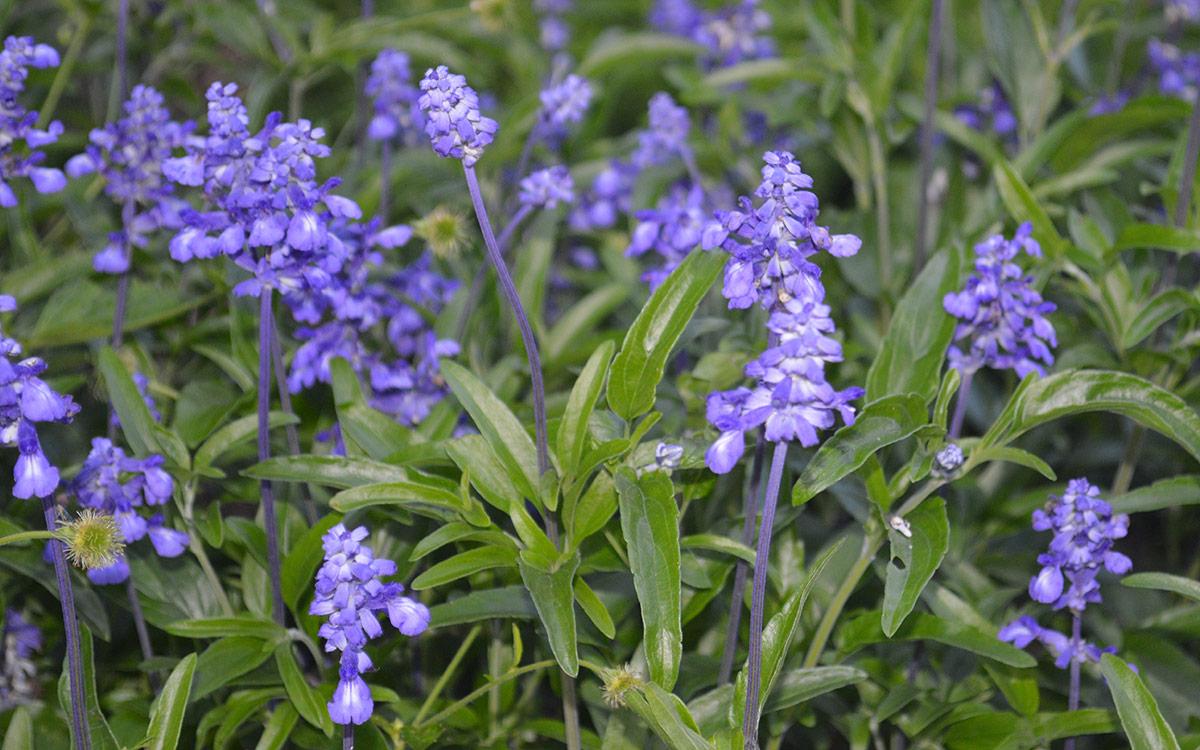
Heat-loving native salvias put on a reliable summer show
Few perennials bloom as vigorously in the heat of summer as salvia (Salvia spp. and cvs., Zones 5-10). There are many different species and varieties to choose from, which flower at different times of the year. For summer blooms, you cannot go wrong with mealy cup sage (Salvia farinacea and cvs., Zones 8-10), which is native to Texas and New Mexico but grows well throughout the Southern Plains. With protection, I’ve had this plant overwinter in my Zone 7 garden, but many growers treat it as an annual. It grows about 2 feet tall and wide, with spikes of purple-blue flowers frequented by butterflies and hummingbirds. Plants perform best in full sun and well-drained soil. Another favorite salvia for summer blooms is ‘Hot Lips’ little leaf sage (Salvia microphylla ‘Hot Lips’, Zones 7-10), with its distinct bicolor flowers.
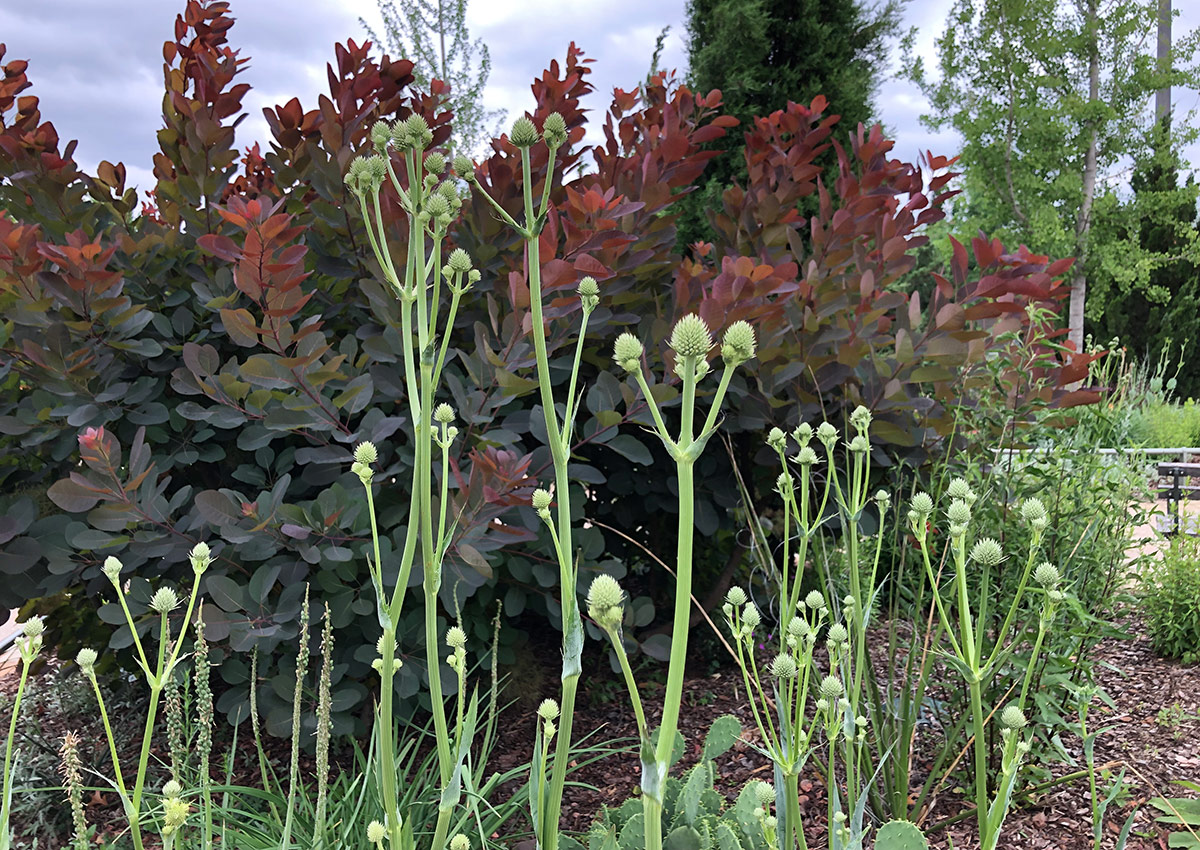
Rattlesnake master produces far-out spiky flowers that don’t mind the heat
For a truly unique native plant buzzing with pollinators, try planting rattlesnake master (Eryngium yuccifolium and cvs., Zones 3-9). This prairie native produces flower spikes standing 3 to 5 feet high above blue-green, yucca-like foliage that provides massive architectural impact in the garden. Each flower stalk holds dozens of spiky, spherical heads packed with tiny white florets. Rattlesnake master provides a valuable source of nectar to native bees, wasps, butterflies, skippers, and beetles from late spring through late summer. Plant in full sun in a dry, lean soil. Plants produce a deep taproot and are extremely drought tolerant, but they do not transplant well once established.
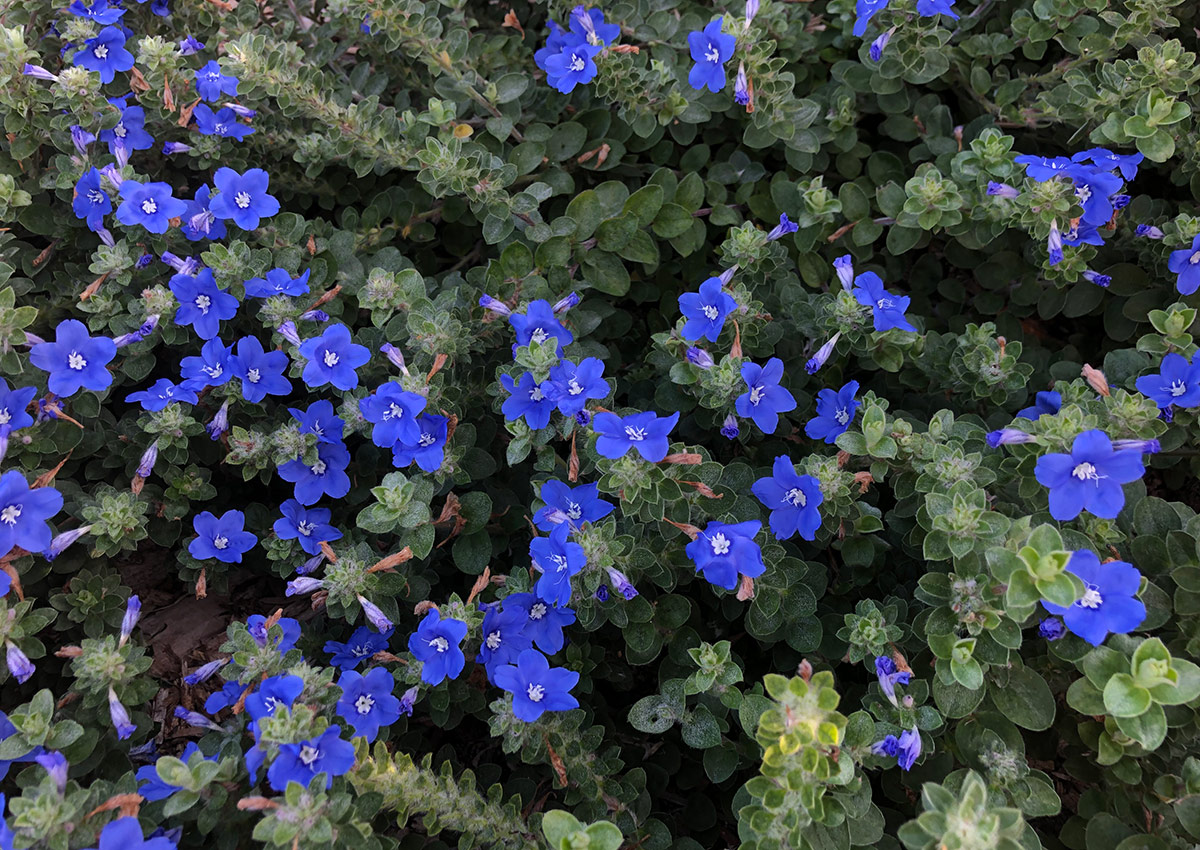
Hot temperatures are no match for dazzling Blue My Mind® dwarf morning glory
Blue My Mind® dwarf morning glory (Evolvulus ‘’USEVO1201′, Zones 9-11) blooms nonstop from spring through fall. Native to dry sandy sites in Brazil and Paraguay, it grows well in full sun and well-drained soil and is drought tolerant once established. It is related to the North American native called Nuttall’s morning glory (Evolvulus nuttallianus, Zones 5-10), which is a rare find in the nursery trade. ‘Blue My Mind’ grows as a low-mounding ground cover 8 inches tall and spreading up to 16 inches. With silvery foliage and intense blue flowers, this plant dazzles in the heat.
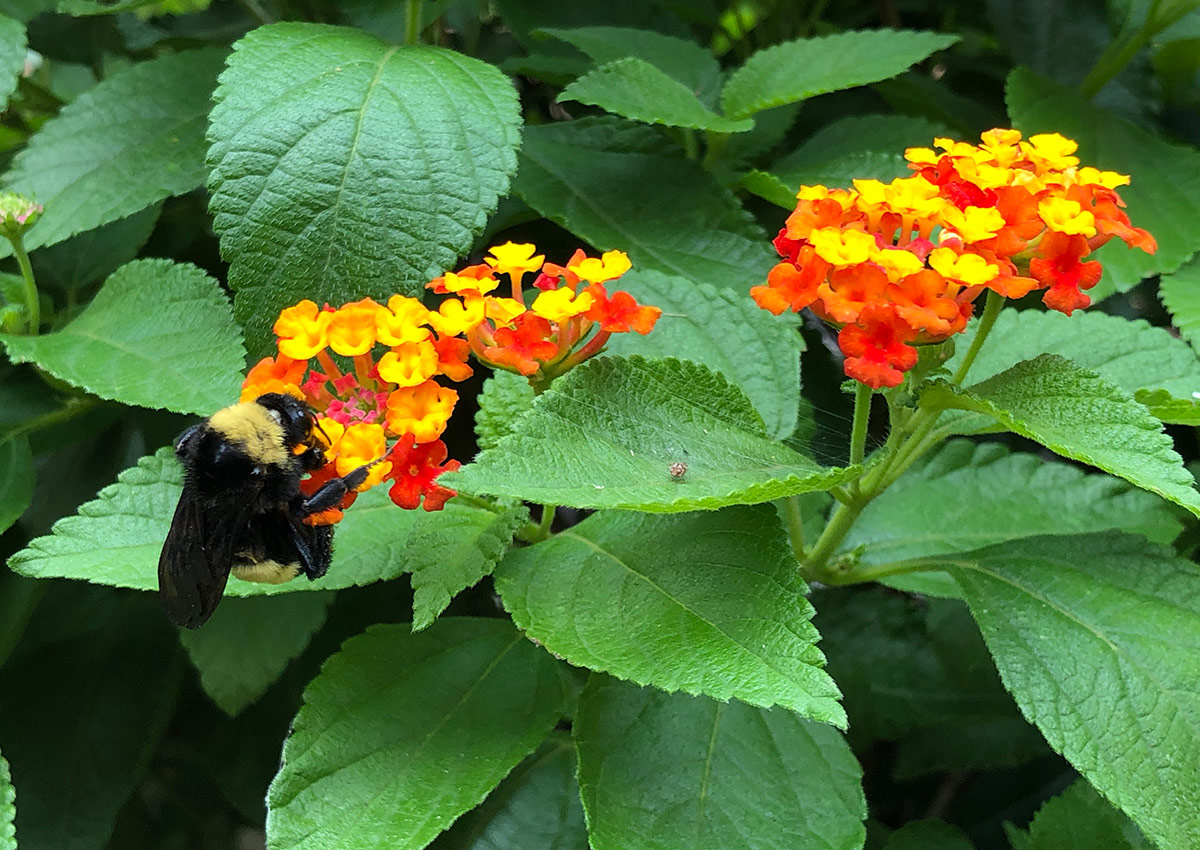
Lantana is the rock star of hot summer bloomers
When it comes to hot summer blooms, lantana (Lantana camara and cvs., Zones 7-11) puts other annuals to shame. This plant thrives in heat and doesn’t mind humidity. With brightly colored blooms, lantana attracts a variety of pollinators to the garden. Pictured here is a bumblebee visiting Little Lucky™ Red lantana (Lantana camara ‘Balluced’, Zones 10-11). This variety is compact, growing in a mound just 1 foot tall and wide. Lantanas perform beautifully in containers, as they prefer well-drained soil. There are also some varieties that can overwinter in Zone 7 when planted in the ground, including the orange-flowered ‘Miss Huff’ (Lantana camara ‘Miss Huff’, Zones 7-10) and the cheery ‘Chapel Hill Yellow’ (Lantana ‘Chapel Hill Yellow’, Zones 7-11). Give lantanas plenty of sunshine for optimal blooms.
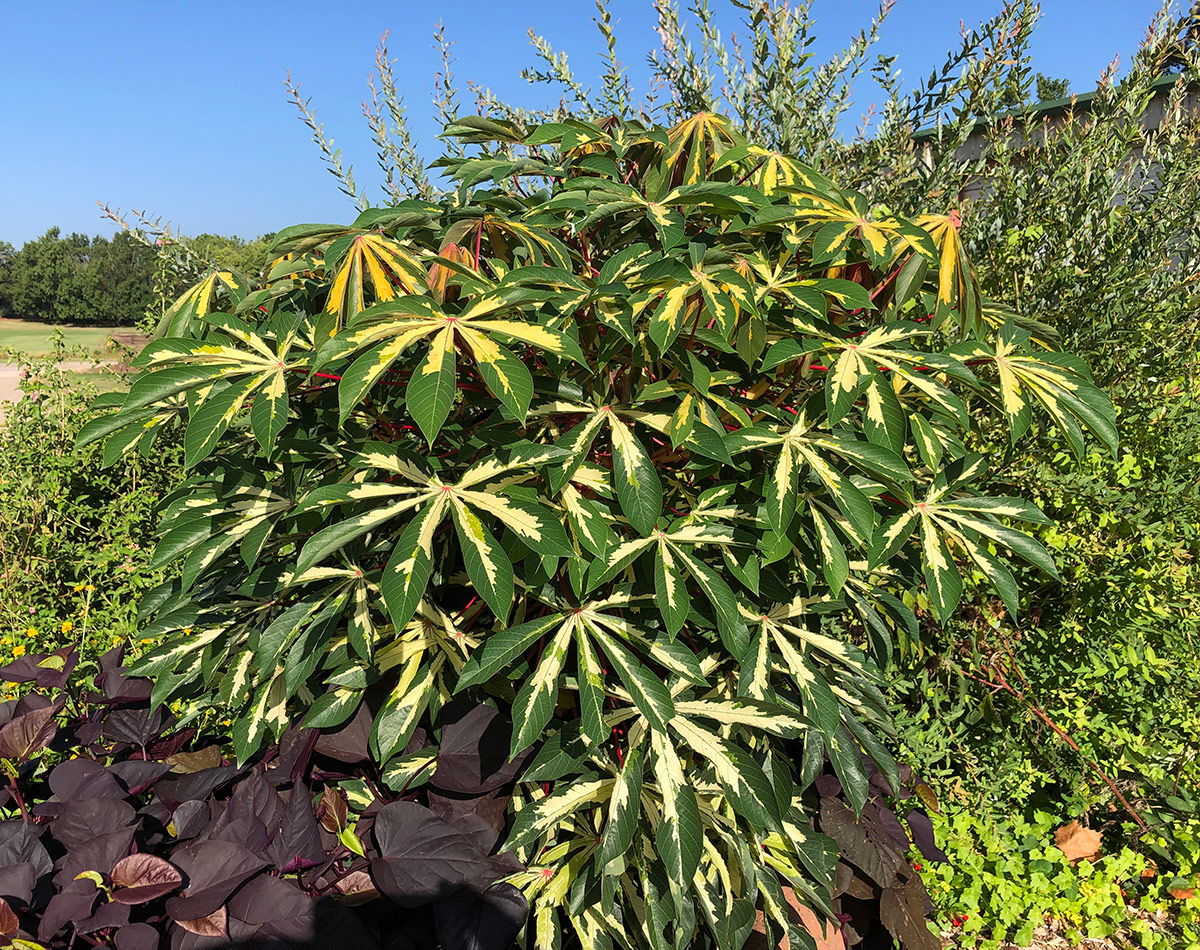
Although not a bloomer, variegated tapioca plant deserves a spot in the hot garden lineup
Read more : Is a Kalanchoe Blossfeldiana an Indoor or Outdoor Plant?
Tropical plants are always a good choice for the summer heat. For foliage, one of my favorites is the variegated tapioca plant (Manihot esculenta ‘Variegata’, Zones 10-11). Growing 3 to 4 feet tall and up to 5 feet wide, variegated tapioca plant makes a statement in the garden with stunning palmately lobed foliage. Each finger of the leaf is streaked in yellow and edged with deep green. Red petioles add even more color. Plant in moist, well-draining soil or a large container, and provide fertilizer to encourage rapid growth. Plant in full sun for best color.
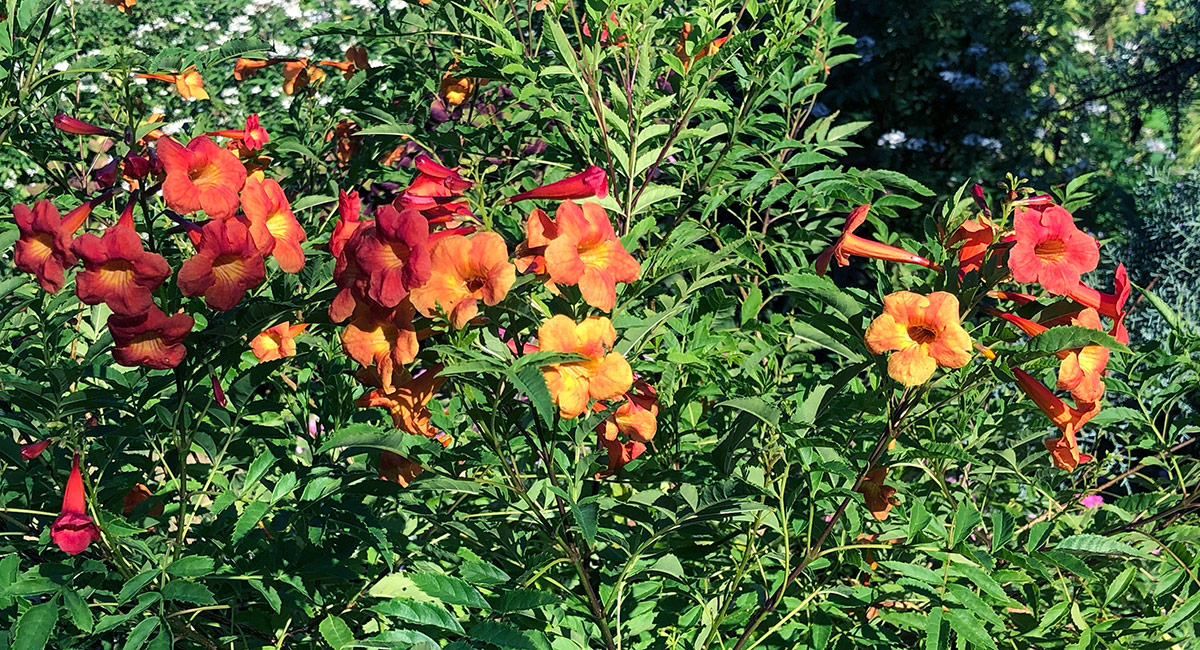
Tap into heat-loving tropical bloomers with stunning esperanza
For brilliant blooms all summer long, try planting the heat and sun-loving Bells of Fire™ esperanza (Tecoma stans ‘TEC6010916’, Zones 9-11). Growing 4 to 6 feet tall and 3 to 4 feet wide, Bells of Fire™ is more compact than the species and makes a stunning specimen in containers or garden beds. The red-orange blooms attract hummingbirds from spring through frost. Plants adapt well to most soil types and tolerate drought once established. The bright green foliage is evergreen in hot climates. In cooler regions, gardeners can overwinter plants indoors.
Although these plants love the heat, be mindful to be water-wise
Not all heat-loving plants are drought tolerant. Many tropical plants, for example, can withstand plenty of heat and humidity as long as they have water. Pay attention to water needs when selecting heat-loving plants, and provide supplemental irrigation as needed. Even some drought-tolerant species require additional water during extremely long dry spells.
—Kim Toscano is a horticulturalist based in Stillwater, Oklahoma. She previously hosted Oklahoma Gardening, a weekly PBS television program produced by the Oklahoma Cooperative Extension Service.
Photos: Kim Toscano
Source: https://gardencourte.com
Categories: Outdoor


